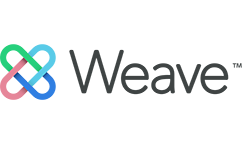While curriculum maps have been around for years, unless you have a pedagogy background you may not have ever created one. They are a useful visual representation of how a program’s learning outcomes are sequenced for students, and also a tool for faculty to make meaningful adjustments as well as streamline assessment. Read on for a summary from Weave’s Academy’s presentation by Sheri Popp.
What is a curriculum? No matter what definition you find, what matters is that colleagues agree on the definition and terminology around mapping and assessment. A few options could be:
- A robust, systematic, and overall plan for student learning (Darby & Lang, 2019)). Note the emphasis here is not just on what we deliver, but what students learn.
- A planned sequence of instruction (Lattuca and Stark, 2009). The ORDER matters!
- A visual representation that illustrates
- students’ course taking patterns or course progression
- how a course contributes to the curriculum
- gaps in learning opportunities.
In all the above examples, the purpose is student focused. Students don’t know what they don’t know, and we need to guide them and show how all the parts fit together – make the implicit explicit.
Why do we map the curriculum?
What problems are we trying to solve?
- A disjointed teaching experience
- A disjointed learning experience
It can be frustrating for faculty when students aren’t demonstrating something we expect they have already learned (for example, documenting sources accurately). However, without a coherent curriculum, it is possible that certain skills may not have been learned prior. This is an unpleasant experience for professors, and obviously a disservice to students. A curriculum map that faculty are familiar with and help create can reduce this frustration.
Imagine this from the student perspective! To be held accountable for skills that have not yet been taught or to wonder how skills relate to each other is exasperating. “Learning doesn’t happen by accident” ( Darby & Lang, 2019). Like a journey, a good map creates an experience where a student takes a path and emerges at the end a competent graduate. It is an opportunity to reinforce that “we aren’t doing this TO you, but with you.”
Other practical uses for curriculum maps
- Creating a new program: Begin with outcomes from an accreditor or model and design courses and assessments from the very start.
- Achieving a coherent curriculum
- Identifying gaps or problems with sequencing
When do we create maps? And how often should they be updated?
- When creating a new program
- When existing programs are being evaluated (perhaps during accreditation or program review)
- In the event of catalysts – new hires, advances in the discipline, changes in the higher ed landscape, changes in the job market
- Once a map is completed it is best practice to set a date for the next revision.
What do we map and how do we do it?
One of the most well known strategies is a backwards design model – Understanding by Design by Wiggins and McTighe. This approach requires scope and sequence to create a well rounded visual map.
- Establish well written goals and outcomes aligned with mission/vision and make sure they are clearly articulated. What will graduates be able to do after completing the program?
- Determine assessments and instruments that are acceptable evidence for how students have achieved the outcomes. As opposed to moving from outcomes right to instruction, this step encourages faculty as a team to select or create assignments that tie directly to learning outcomes.
- Ensure that courses are offered that include the outcomes and assessments. This sounds obvious, but very often there are outcomes not being addressed in current courses or no measurements in place.
- Check that outcomes are sequenced in a logical order, specifically thinking how a student would progress through the courses. This is an excellent time to discuss prerequisites.
Dos
- Map degree programs
- Connect courses to SLOs
- Share maps with stakeholders (employers, students (remind them the outcomes and sequencing), faculty, other departments, accreditors)
Don’ts
- Map extracurriculars
- Map electives
- Map SPs or operational departments
- Reverse engineer maps
Other Tips
- Start simple with 2-3 outcomes
- Focus on the program outcomes, then move on to ILO/gen ed or level of mastery
- Start with a focus map – does this course focus on this outcome Y/N?
- Advance ONLY if it is useful
Curriculum maps are a wonderful tool for promoting student learning, encouraging faculty awareness and collaboration, and getting more out of assessment and accreditation. Want to know more?



